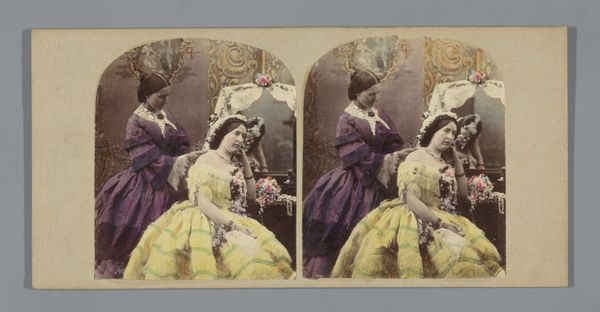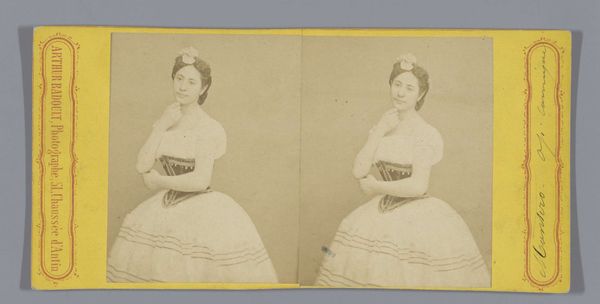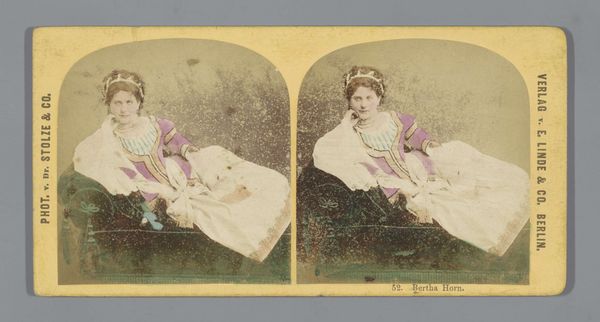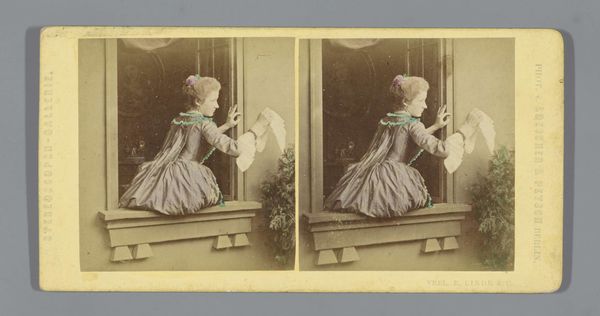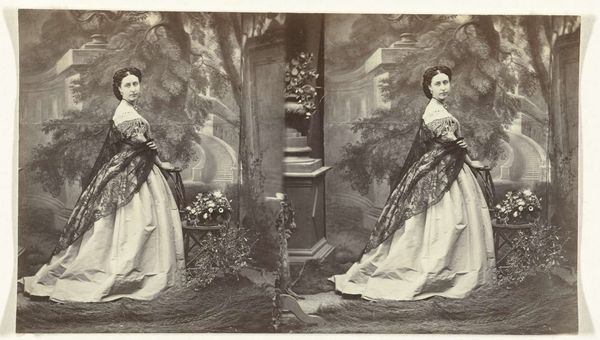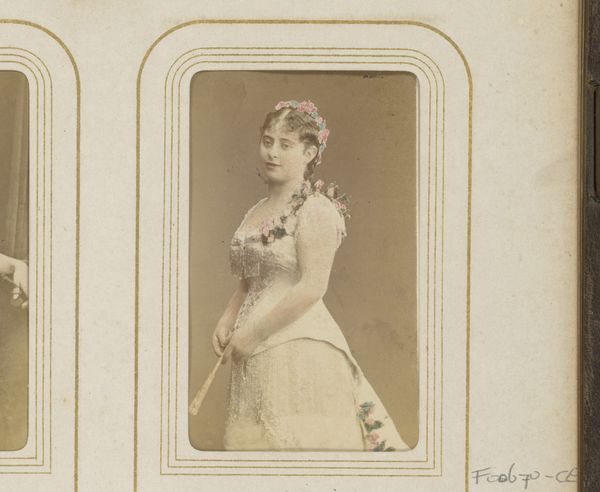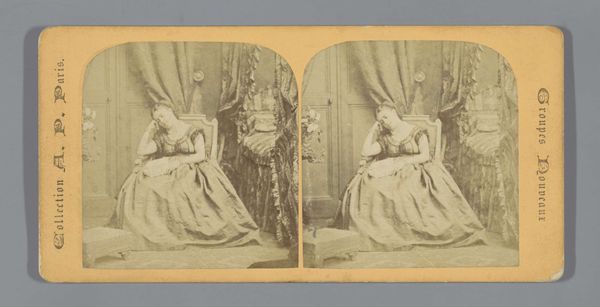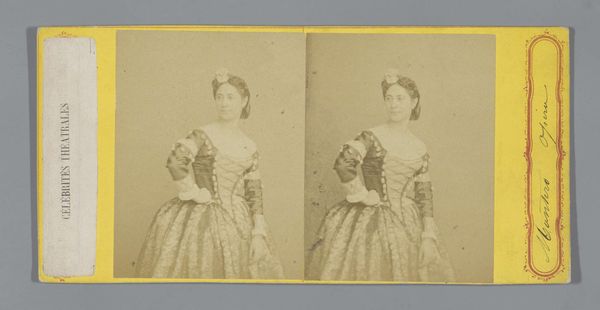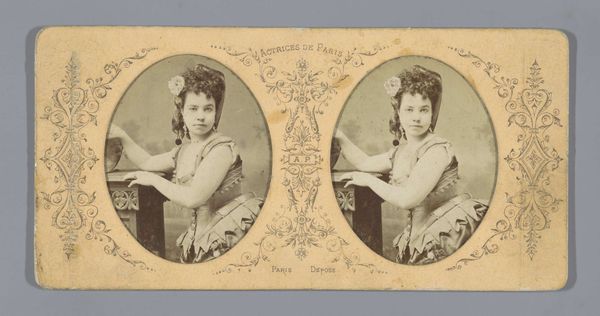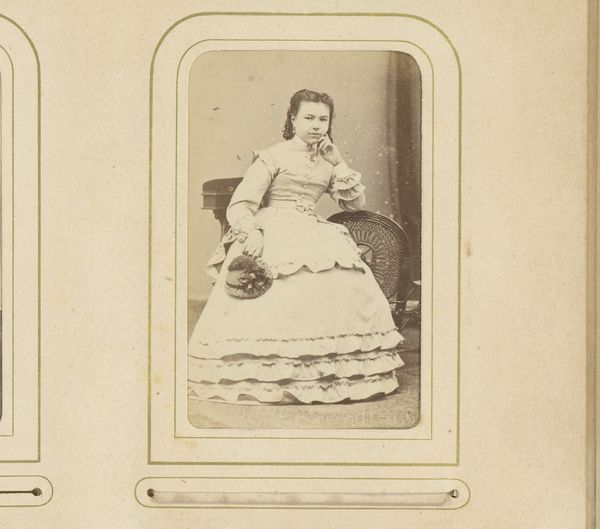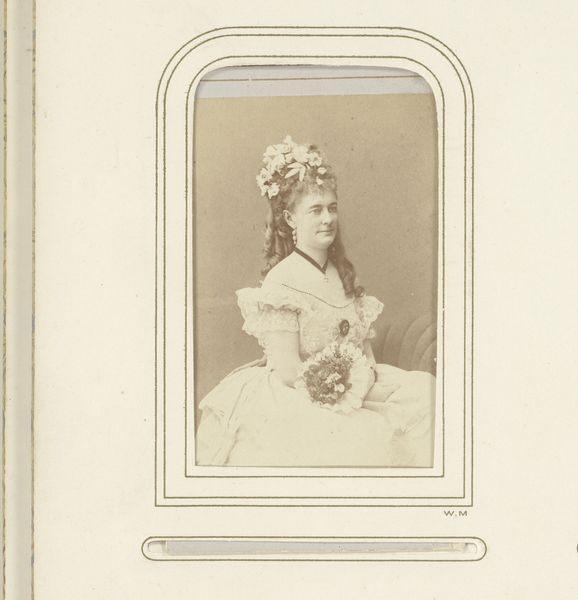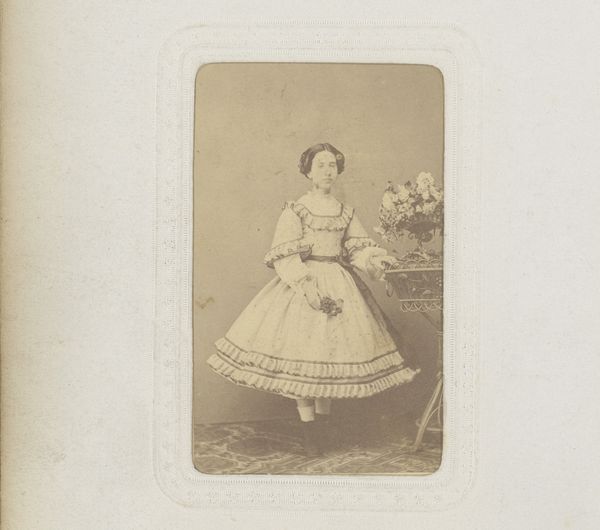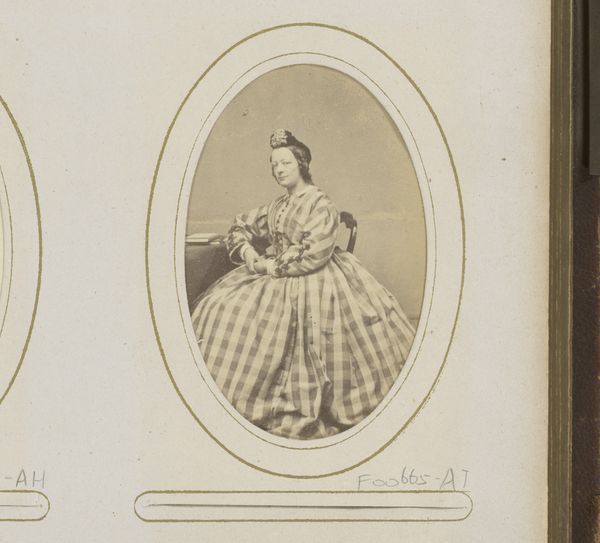
photography
#
portrait
#
water colours
#
photography
#
coloured pencil
Dimensions: height 87 mm, width 173 mm
Copyright: Rijks Museum: Open Domain
Curator: What a lovely and melancholic portrait. Loescher & Petsch, a photographic studio, captured this image between 1863 and 1868. It's entitled "Portret van een vrouw met een boeket," or "Portrait of a Woman with a Bouquet," combining photography with water colours and coloured pencil. Editor: It has such a wistful air, doesn't it? The subdued tones and the woman’s downward gaze suggest a narrative, a quiet contemplation of something lost or longed for. Is there any insight into what such images were designed to convey at the time? Curator: Indeed. In the 19th century, portraits often acted as symbolic representations. Flowers, for example, were heavily laden with meaning. The specific type of flowers the woman holds—their species, color, and arrangement—would have spoken volumes to contemporary viewers. What hidden language do you suppose they whisper here? Editor: Considering the period, perhaps the bouquet signals themes around Victorian notions of femininity, duty, and domesticity. Is she a young bride clutching her wedding bouquet, already aware of the patriarchal expectations she's inheriting? The flowers could also symbolize remembrance, subtly referencing mortality and the transience of life. The image resonates so profoundly because the sitter, presumably female, expresses what has gone unacknowledged in portraiture throughout art history. Curator: I agree completely that such compositions allow space for personal introspection in relation to greater ideas of memory. Her tender expression could be linked with many possibilities from bereavement to hope. But one aspect that fascinates me here, in particular, is its three-dimensionality that would result when viewed with a stereoscope viewer: two slightly offset photographs of the subject mounted side-by-side to trick the eye into perceiving a single 3D image. Perhaps, in addition to personal themes, it was intended for magical transport. Editor: Fascinating—it complicates the reading considerably when situating it within entertainment, domestic, and consumer cultures. Now the question becomes how that perceived realness could potentially deepen complicity within unequal power dynamics. Are we encouraged to step into this woman's perspective as a path to critical thought, or has she simply become yet another consumable fantasy of mid-19th century womanhood? Curator: It's the simultaneous unveiling and obscuring that captures my imagination. Thank you for sharing your perspective on these sociohistorical implications. Editor: Likewise, this has brought new considerations about portraiture, spectatorship, and power that had eluded my purview before!
Comments
No comments
Be the first to comment and join the conversation on the ultimate creative platform.

